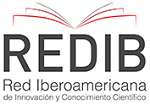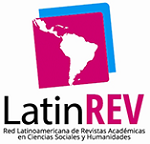Adiestramiento virtual en las competencias matemáticas a través de la plataforma Khan Academy
DOI:
https://doi.org/10.15649/2346030X.3571Palabras clave:
adiestramiento virtual, khan academy, rendimiento académicoResumen
El propósito del articulo radica en la creación de cursos de adiestramiento virtual en la plataforma Khan Academy, a partir de los resultados del rendimiento académico de los estudiantes que entran a primer semestre de Universidad, en competencias Matemáticas. La metodología fue de diseño no experimental, transeccional, nivel explicativo y tipo de campo. La población y muestra fue de (189) estudiantes, con instrumento validado por cinco expertos en el área, escala tipo Likert. A partir del análisis de resultados, se crearon los cursos de adiestramiento virtual en matemáticas. Acorde con el estudio se obtuvo que el 31 % de la población estudiantil posee un nivel de desempeño de (0-35), donde el estudiante probablemente puede leer información puntual. En nivel (36-50), se encontró el 31% de la población, donde el estudiante es capaz de comparar y establecer relaciones entre datos presentados. En nivel (51-70), se presentó un 19%, donde el estudiante selecciona información, señala errores y hace distintos tipos de transformaciones y manipulaciones aritméticas y algebraicas sencillas. Por último, en nivel (71-100), fué un 20%, aquí se resuelven problemas y justifican la veracidad o falsedad de afirmaciones que requieren el uso de conceptos de probabilidad, propiedades algebraicas, relaciones trigonométricas y características de funciones reales.
Referencias
OECD, "Revisión de políticas nacionales de educación. La educación en Colombia," 2016.
S. Tobon, "La formacion basada en competencias en la educacion superior: el enfoque complejo.," Universidad de la Guadalajara., 2008.
J. Zapata, "El modelo y enfoque de formación por competencias en la Educación Superior: apuntes sobre sus fortalezas y debilidades.," Revista Academia y Virtualidad, vol. 8, no. 2, pp. 24-33, 2015.
ICFES, "INFORME NACIONAL Resultados nacionales 2014-II – 2017-II Saber 11," 2018.
ICFES, "Marco de referencia para la evaluacion, ICFES. Modulo razonamiento cuantitativo, saber 11- Saber Pro.," 2015.
ICFES, "Matemáticas. Marco de referencia para la evaluación.," 2020.
ICFES, "Modulo Razonamiento Cuantitativo saber Pro y Saber T y T. Marco de Referencia para la evaluacion.," 2023.
J. F. J. M. A. y. V. S. Vergara, " Estrategia didáctica para el fortalecimiento del razonamiento cuantitativo mediante el uso de las TIC.," Matua, vol. Vol. 2, no. Nº 2, pp. 71-80, 2015.
E. Cordero, " Uso del Khan Academy en el logro de las competencias matemáticas en estudiantes del 1° de secundaria en la I.E. N° 2022, Comas .," Universidad Cesar Vallejo, ,Lima – Peru., 2019.
A. Bonilla, " Diseño de una estrategia de enseñanza y aprendizaje bimodal mediada por la plataforma Khan Academy como herramienta de apoyo en estudiantes de séptimo grado.," Pontificia Universidad Javeriana., Bogotá. Colombia., 2016.
ICFES, " Guía de orientación saber 11, ICFES 2021-2.," 2021.
S. Betancur López, " Operacionalización de variables.," Universidad de Caldas., Manizales Colombia., 2013.
M. Núñez Flores, " LAS VARIABLES: ESTRUCTURA Y FUNCIÓN EN LA HIPÓTESIS.," , vol. Vol 11., no. N°20, pp. 163-179, 2007.
M. Tamayo y Tamayo, Metodologia De La Investigacion., Mexico D.F.: Limusa., 2013.
R. F. C. y. B. M. • Hernández, Metodología de la investigación. Sexta edición., México D.F.: McGRAW-HILL., 2014.
D. K. B. C. H. y. V. d. K. H. Tempelaar, "El papel de los exámenes formativos digitales en el aprendizaje virtual de matemáticas: un estudio de caso en los Países Bajos.," Revista de Universidad y Sociedad del Conocimiento (RUSC)., vol. vol. 9., no. núm. 1., pp. pp. 92-113, 2012.
E. y. S. J. Huapaya, "La resolución de problemas en entornos virtuales: propuesta didáctica en estudiantes de matemática i-ii Cpel-universidad san Ignacio de Loyola.," Universidad San Ignacio de Loyola., Lima, Peru., 2017.
j. Ayil, "Entorno virtual de aprendizaje: una herramienta de apoyo para la enseñanza de las matemáticas.," RITI Journal., vol. Vol. 6, no. No 11., pp. 34-39, 2018.
I. y. M. S. Cuesta, " Alternativa metodológica basada en el uso de khan Academy como refuerzo académico en matemáticas para mejorar el rendimiento académico.," Universidad Nacional De Educación., Azogues, Ecuador. , 2019.
M.-D. ,. A.-S. ,. G.-P. J. González-Zamar, "Aprendizaje ubicuo en educación artística y lenguajes visuales: Análisis de tendencias," Campus Virtuales., vol. Vol 10., no. No 1, pp. 125-139, 2021.
M. M. M. S. ,. E. C. Schmidta, "Combining physical and cognitive training to improve kindergarten.," Contemporary Educational Psychology , vol. 63, pp. 1-14, 2020.
R. Bucea-Manea-Țoniş, O. Martins, R. Bucea-Manea-Țoniş, C. Gheorghiță, V. Kuleto, M. Ilić and V.-E. Simion, "Blockchain Technology Enhances Sustainable Higher Education. , 13, 12347," Sustainability., vol. 13, no. 22, p. 12347, 2021.
Y. A. A. Y. A. Qasem, "Continuance use of cloud computing in higher education institutions: A conceptual model.," Applied Sciences, vol. 10, no. 19, p. 6628, 2020.
L. L. J. M. Ung, "Computational thinking for teachers: Development of a localised E-learning system," Computers & Education, vol. 177, p. 104379, 2022.
K. ,. F. I. S. ,. S. M. I. Letaief, "Edge Artificial Intelligence for 6G: Vision.," IEEE JOURNAL ON SELECTED AREAS IN COMMUNICATIONS, vol. 40, no. 1, 2022.
R. W. Elastika, Sukono and S. P. Dewanto, "Analysis of Factors Affecting Students' Mathematics Learning Difficulties Using SEM as Information for Teaching Improvement," ERIC Number: EJ1319610, vol. 14, no. 4, pp. 281-300, 2021.
Z. K. M. B. O. Shafait, "Modeling the mediating roles of self-directed learning and knowledge management processes between emotional intelligence and learning outcomes in higher education," PubMed , vol. 16, no. 7, p. 0255177, 2021.
I. M. S. K. Ramli, "The Impacts of Learning Analytics on Primary Level Mathematics Curriculum," Universal Journal of Educational Research., vol. 8, no. 5A, pp. 95-99, 2020.
E. Sen, "THEMATIC ANALYSIS OF ARTICLES ON FLIPPED LEARNING IN MATHEMATICS EDUCATION," Turkish Online Journal of Distance Education., vol. 23, no. 2, pp. 202-222, 2022.
O. R. N. H. U. J. U. U. I. M. Nja CO, "Students’ attitude and academic achievement in a flipped classroom.," Heliyon, vol. 8, no. 1, pp. 1-12, 2022.
A. M. Lemmo, "High School Students’ Use of Digital General Resources During Lockdown.," European Journal of Science and Mathematics Education., vol. 10, no. 1, pp. 139-153, 2022.
C. L. Y. ,. Z. Tu, "Hybrid Element Heuristic Algorithm Optimizing Neural Network-Based Educational Courses.," Wireless Communications and Mobile Computing., vol. 2021, pp. 1-12, 2021.
A. L.-M. P. H. W. ,. M.-M. Melgar, "Gamification in the Learning of Mathematics in University Students.," International Journal of Early Childhood Special Education, vol. 13, no. 2, pp. 444-454, 2021.
I. S. R. Adaobi Ubah, "Blended Learning Approach to Mathematics Education Modules: An Analysis of Pre-Service Teachers' Perceptions.," International Journal of Learning, Teaching and Educational Research., vol. 19, no. 7, pp. 298-319, 2020.
J. M. B. A. C. H. M. M. C. M. &. V. M. Cebrian, "Semi-automatic validation of cycle-accurate simulation infrastructures: The case for gem5-x86.," Future generations computer systems., vol. 112, no. 11, pp. 832-847, 2020.
S. S. R. A. K. T. &. S. O. Blakseth, "Deep neural network enabled corrective source term approach to hybrid analysis and modeling.," Neural Networks., vol. 146, no. c, pp. 181-199, 2022.
D. A. A. M. S. &. H. S. J. Robson, "Self-regulation in childhood as a predictor of future outcomes: A meta-analytic review.," Psychological Bulletin, vol. 146, no. 4, pp. 324-354, 2020.
J. M. B. A. C. H. M. M. C. M. &. V. M. Cebrian, "Semi-automatic validation of cycle-accurate simulation infrastructures: The case for gem5-x86," Future Generation Computer Systems., vol. 112, no. 11, pp. 832-847, 2020.
Descargas
Publicado
Cómo citar
Descargas
Número
Sección
Licencia
Derechos de autor 2024 AiBi Revista de Investigación, Administración e Ingeniería

Esta obra está bajo una licencia internacional Creative Commons Atribución 4.0.
La revista ofrece acceso abierto bajo una Licencia Creative Commons Attibution License

Esta obra está bajo una licencia Creative Commons Attribution (CC BY 4.0).








